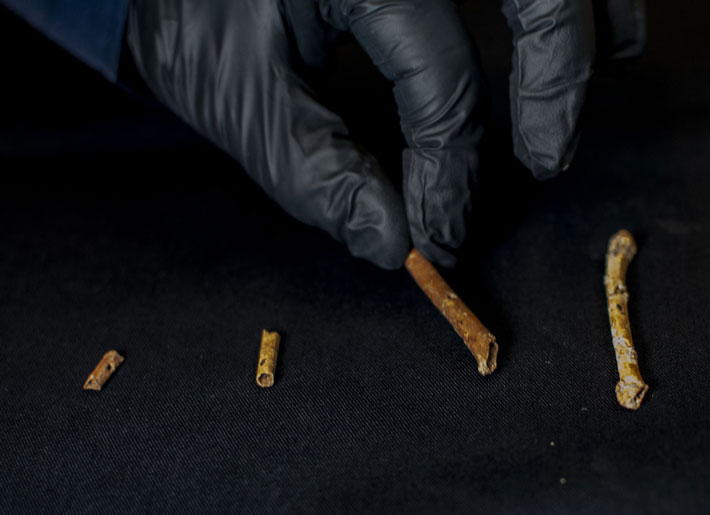 JERUSALEM, ISRAEL—According to a Live Science report, several 12,000-year-old flutes have been found at Eynan-Mallaha, a Natufian site in Israel. Carved from the bones of small waterfowl, the flutes were discovered among more than 1,000 bird bones. One intact instrument measures just two and one-half inches long. Larger bones would have produced deeper sounds, explained research team leader Laurent Davin of the French Research Center in Jerusalem. “They are probably some of the smallest prehistoric sound instruments known today,” Davin said. A replica flute made with computer software produced a high-pitched sound similar to calls made by Eurasian sparrowhawks and common kestrels. Ocher residues on the flutes suggest that they had been painted red, and wear marks suggest they might have been attached to a string and worn, he added. Natufians may have played the flutes to produce bird-like music, the researchers concluded, or they may have used them to produce falcon-like calls while hunting and gathering. To read about wind instruments found in Peru that were made from camelid bones, go to "Artifact."
JERUSALEM, ISRAEL—According to a Live Science report, several 12,000-year-old flutes have been found at Eynan-Mallaha, a Natufian site in Israel. Carved from the bones of small waterfowl, the flutes were discovered among more than 1,000 bird bones. One intact instrument measures just two and one-half inches long. Larger bones would have produced deeper sounds, explained research team leader Laurent Davin of the French Research Center in Jerusalem. “They are probably some of the smallest prehistoric sound instruments known today,” Davin said. A replica flute made with computer software produced a high-pitched sound similar to calls made by Eurasian sparrowhawks and common kestrels. Ocher residues on the flutes suggest that they had been painted red, and wear marks suggest they might have been attached to a string and worn, he added. Natufians may have played the flutes to produce bird-like music, the researchers concluded, or they may have used them to produce falcon-like calls while hunting and gathering. To read about wind instruments found in Peru that were made from camelid bones, go to "Artifact."
Prehistoric Bird Bone Flutes Found in Israel
